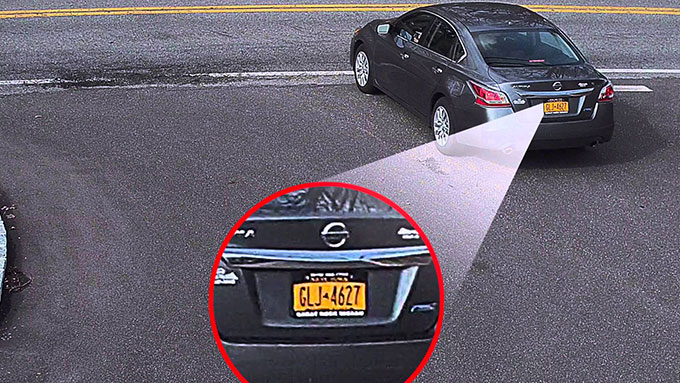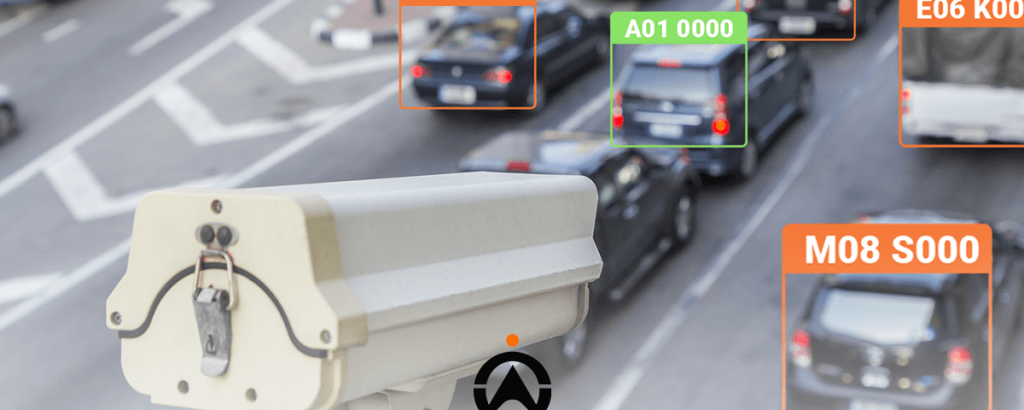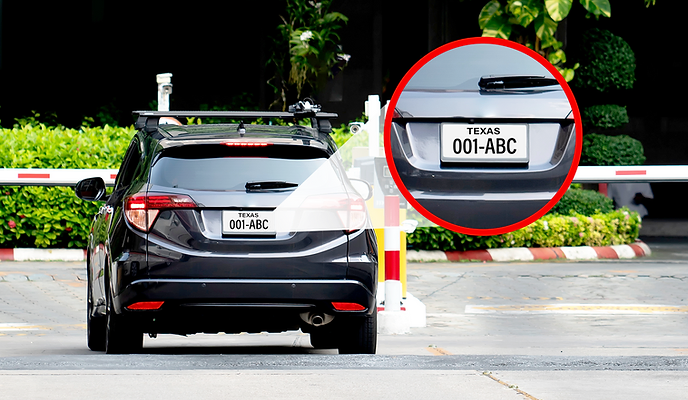The Role of License Plate Recognition Cameras in Vehicle Tracking and Logistics
In the rapidly evolving landscape of transportation and logistics, the integration of advanced technologies has become imperative to streamline operations, enhance security, and improve overall efficiency. Among these technologies, License Plate Recognition cameras have emerged as a game-changer, revolutionizing vehicle tracking and logistics management systems. With their ability to capture, analyze, and interpret license plate information swiftly and accurately, LPR cameras have become indispensable tools for businesses operating in various sectors, including transportation, supply chain management, law enforcement, and urban planning.
Table of Contents
Introduction
In today’s interconnected world, the efficient movement of goods and vehicles is crucial for the functioning of economies worldwide. Logistics companies, transportation agencies, law enforcement authorities, and businesses rely heavily on accurate and timely tracking of vehicles for various purposes, ranging from ensuring compliance with regulations to optimizing delivery routes. Traditional methods of vehicle tracking, such as manual inspection and paper-based documentation, are not only time-consuming but also prone to errors and inefficiencies. This is where License Plate Recognition (LPR) cameras step in, offering a sophisticated solution that combines cutting-edge technology with practical utility.

Understanding License Plate Recognition Technology
License Plate Recognition (LPR), also known as Automatic Number Plate Recognition (ANPR), is a technology that enables automatic detection, recognition, and recording of license plate numbers from still images or video footage. The process involves several key steps:
Image Capture: LPR cameras use optical sensors, often equipped with infrared illumination, to capture images of vehicles and their license plates. These cameras can be fixed at specific locations, such as toll booths, parking lots, or entry/exit points, or mounted on vehicles for mobile applications.
Image Processing: The captured images are processed using specialized algorithms that isolate and enhance the license plate area while filtering out irrelevant background information. This step may involve tasks like image rectification, noise reduction, and normalization to improve recognition accuracy.
License Plate Localization: Once the license plate region is identified within the image, the system employs pattern recognition techniques to locate individual characters on the plate. This process may vary depending on factors such as plate orientation, lighting conditions, and plate design variations across different regions.
Character Recognition: Using Optical Character Recognition (OCR) algorithms, the system extracts alphanumeric characters from the localized plate region. Advanced OCR software can handle variations in font styles, sizes, and distortions caused by factors like perspective and motion blur.
Data Interpretation: The recognized license plate number is compared against databases or reference lists to perform various tasks, such as vehicle identification, access control, toll collection, parking management, and law enforcement.

Applications of License Plate Recognition camera in Vehicle Tracking and Logistics
The widespread adoption of LPR technology has led to its integration into diverse applications within the realm of vehicle tracking and logistics management:
1. Automated Toll Collection
LPR cameras installed at toll booths enable automatic identification of vehicles and seamless collection of toll fees without the need for manual intervention. This not only reduces traffic congestion but also enhances revenue collection efficiency for transportation authorities.
2. Fleet Management
Logistics companies and fleet operators utilize LPR systems to monitor the movement of vehicles in real time, track delivery schedules, optimize routes, and ensure compliance with regulatory requirements. By automating tasks such as vehicle identification and entry/exit logging, LPR technology minimizes administrative overhead and improves operational transparency.
3. Parking Management
In urban areas with limited parking space, LPR cameras play a vital role in managing parking facilities effectively. These cameras can monitor parking occupancy, enforce time limits, identify unauthorized vehicles, and facilitate electronic payment systems, enhancing convenience for both drivers and parking lot operators.
4. Supply Chain Security
Ensuring the security and integrity of supply chains is paramount for businesses operating in sectors such as logistics, retail, and manufacturing. LPR technology helps in tracking the movement of goods-laden vehicles, verifying delivery schedules, and detecting any unauthorized access or tampering, thereby reducing the risk of theft, counterfeiting, and diversion of goods.
5. Law Enforcement
Law enforcement agencies leverage LPR cameras for various purposes, including traffic monitoring, vehicle registration checks, and identification of stolen or wanted vehicles. By automating the process of license plate recognition, these systems enable rapid identification of vehicles of interest, aiding in crime prevention and investigation efforts.

Benefits of License Plate Recognition in Vehicle Tracking and Logistics
The integration of LPR cameras offers numerous benefits for businesses, transportation authorities, and society at large:
1. Improved Efficiency
By automating manual tasks such as data entry, verification, and logging, LPR systems streamline operations and reduce processing times, leading to overall efficiency gains in vehicle tracking and logistics management.
2. Enhanced Accuracy
The advanced algorithms used in LPR technology ensure high accuracy in license plate recognition, minimizing errors and false positives. This reliability is essential for tasks that require precise identification and verification of vehicles.
3. Cost Savings
Although the initial investment in LPR infrastructure may be significant, the long-term cost savings achieved through automation, reduced manpower requirements, and improved resource utilization justify the expenditure for businesses and government agencies.
4. Enhanced Security
By providing real-time monitoring and alerts, LPR systems enhance security by deterring unauthorized access, identifying suspicious activities, and facilitating rapid response to security incidents, thereby safeguarding assets and personnel.
5. Data Insights
The data collected through LPR systems can be analyzed to derive valuable insights into traffic patterns, vehicle movements, and consumer behavior, enabling informed decision-making and strategic planning for transportation and logistics operations.
Challenges and Considerations
While LPR technology offers significant advantages, its implementation is not without challenges and considerations:
Privacy Concerns: The widespread deployment of LPR cameras raises concerns about privacy infringement and surveillance. To address these concerns, policymakers need to establish clear regulations and guidelines governing the collection, storage, and use of license plate data.
Accuracy and Reliability: Despite advancements in OCR algorithms, LPR systems may encounter challenges in accurately recognizing license plates under adverse conditions such as poor lighting, inclement weather, or vehicle motion. Continuous refinement and testing are necessary to improve system performance and reliability.
Data Security: Given the sensitive nature of license plate data, ensuring its security and protection against unauthorized access or misuse is paramount. Robust encryption protocols, access controls, and data governance frameworks must be implemented to safeguard against potential security breaches.
Integration with Existing Systems: Seamless integration of LPR technology with existing infrastructure, such as traffic management systems, database platforms, and communication networks, requires careful planning and coordination to avoid compatibility issues and ensure interoperability.
Ethical Considerations: The use of LPR technology raises ethical questions regarding its potential impact on civil liberties, human rights, and social justice. Stakeholders must engage in transparent dialogue and ethical deliberation to address these concerns and mitigate any adverse consequences.

Future Outlook
As technology continues to evolve, the role of License Plate Recognition cameras in vehicle tracking and logistics management is poised to expand further, driven by advancements in artificial intelligence, sensor technology, and data analytics. Future developments may include:
- Integration with emerging technologies such as blockchain and the Internet of Things (IoT) for enhanced security, traceability, and transparency in supply chain management.
- Adoption of cloud-based LPR solutions for scalability, flexibility, and cost-effectiveness in deploying and managing large-scale systems.
- Development of predictive analytics models leveraging license plate data to anticipate traffic congestion, optimize delivery routes, and mitigate logistical risks.
- Exploration of novel applications such as vehicle-to-infrastructure (V2I) communication, smart parking systems, and autonomous vehicle management using LPR technology.
Conclusion
License Plate Recognition cameras have emerged as indispensable tools for vehicle tracking and logistics management, offering a potent combination of accuracy, efficiency, and security. From automated toll collection and fleet management to parking enforcement and supply chain security, LPR technology finds diverse applications across various sectors, driving operational improvements and cost savings. However, to realize its full potential, stakeholders must address challenges related to privacy, accuracy, data security, and ethical considerations. With ongoing innovation and collaboration, License Plate Recognition cameras are poised to play an increasingly pivotal role in shaping the future of transportation and logistics worldwide.
In the dynamic landscape of vehicle tracking and logistics, the role of License Plate Recognition (LPR) cameras cannot be overstated. These sophisticated systems have revolutionized the way businesses and organizations manage their fleets, monitor traffic, and ensure security. By combining advanced technology with practical utility, LPR cameras offer a powerful solution for enhancing efficiency, accuracy, and security in vehicle tracking and logistics management.

